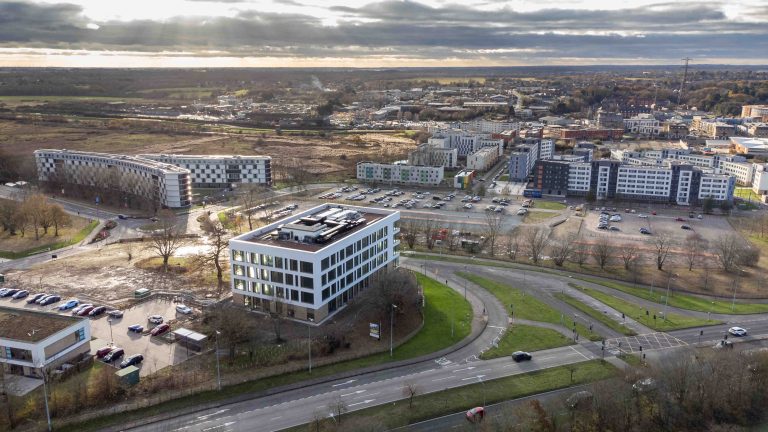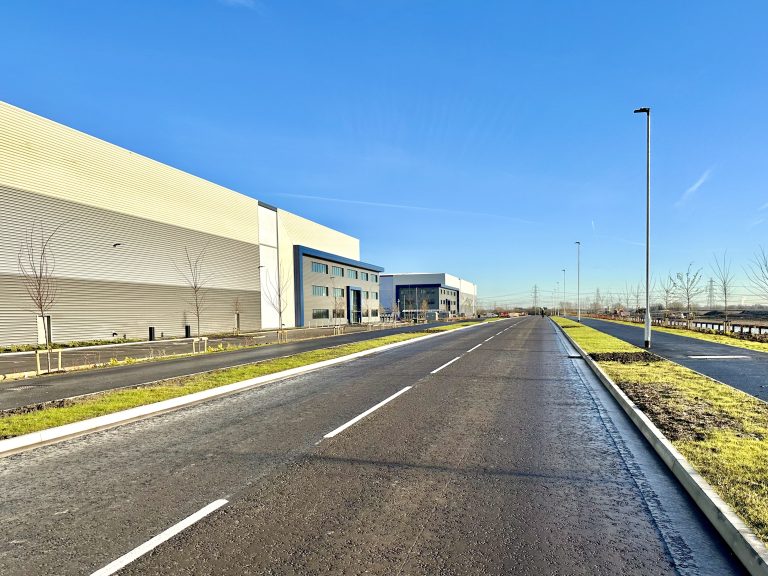HS2’s first giant tunnelling machine – which launched almost 3 years ago – broke through today at the end of her 10-mile (16km) journey under the Chilterns, excavating the longest tunnel on the ambitious new rail project. The enormous 2,000 tonne Tunnel Boring Machine (TBM), named ‘Florence’, is one of 10 machines excavating the 32 miles of tunnel on the new railway linking London Euston with Birmingham and was the first to launch, in May 2021. The breakthrough is a major milestone for the HS2 project, which will almost halve journey times between Britain’s two largest cities, while freeing up space for more local services on the most crowded part of the existing West Coast Main Line. Two identical TBMs were used to create the twin-bore Chiltern tunnel, which stretches from the South Portal near the M25 to South Heath in Buckinghamshire. Parallel tunnels will carry north and south bound trains with a second TBM, named ‘Cecilia’, due to breakthrough in the coming weeks. Rail Minister Huw Merriman said: “This ground-breaking moment for HS2 demonstrates significant progress on the country’s largest infrastructure project, with ‘Florence’ paving the way for faster, greener journeys between London and Birmingham while supporting hundreds of jobs and apprenticeships along the way. “Today’s breakthrough of HS2’s longest tunnel highlights the momentum behind the project and the achievement is testament to the hard work and dedication of the 450-strong team helping deliver the line that will transform rail travel for generations to come.” Designed specifically for the geology under the Chilterns, each TBM is an underground factory – excavating the tunnel, lining it with 56,000 pre-cast concrete segments and grouting them into place as it moves forward at an average speed of 16m per day. Four similar TBMs are being used for the London approach tunnels, while another two will work on Birmingham’s Bromford tunnel. Preparations are also underway for the launch of two more machines to excavate the Euston tunnels. The breakthrough comes a week after HS2 published new research which shows how the impending arrival of high speed rail will drive a £10 billion economic boost for the West Midlands during the next 10 years, with a huge increase in new development around the two station sites. HS2 Ltd Executive Chairman, Sir Jon Thompson, said: “Today is an incredible day of HS2 and I’d like to thank the hundreds of people who’ve worked so hard over many years to make it happen. Once complete, HS2 will dramatically improve journeys between our two largest cities and also free up space on the existing mainline for more local trains. “We’ve still got a lot of work to do, but historic moments like today really underline the huge amount of progress that’s been made and the fantastic engineering skills we have on the project.” Both machines launched from the South Portal and are operated by HS2’s main works contractor, Align – a joint venture formed of three international infrastructure companies: Bouygues Travaux Publics, Sir Robert McAlpine, and VolkerFitzpatrick. The machines are made by TBM specialists Herrenknecht, in Germany. Each TBM is operated by a crew of around 17 people, working in shifts to keep the machines running 24/7. They are supported by over 100 people on the surface, managing the logistics and maintaining the smooth progress of the tunnelling operation. In total, more than 450 people have worked on the tunnels and in support teams on the surface over the last 3 years. This includes a dedicated team which produced 112,000 precision-engineered, fibre-reinforced concrete tunnel wall segments at a purpose build temporary factory at the South Portal who completed their work just before Christmas – and a team processing the spoil from the tunnels. Align’s Project Director, Daniel Altier said: “The typical drive for a TBM is 5-6km and therefore the challenges in completing at 16km drive should not be underestimated. “Florence and her sister TBM Cecilia were designed in partnership with Herrenknecht. They incorporate a number of innovations and technologies that have been introduced on TBMs in the UK for the first time, to enhance performance and safety. This includes ‘semi-continuous boring’, allowing our TBMs to build the rings that line the tunnels without pausing. “The mining of the tunnel is a fantastic achievement for not only the Align tunnelling team but also the earthworks team who have managed chalk excavated from the tunnels and placed on site, along with many other supporting functions. I would also like to acknowledge our supply chain partners, including TGT that provided the teams to operate the TBMs and MS with whom we designed and operated the slurry treatment plant, with 24 filter presses it is the largest in the world.’” The 3 million cubic metres of chalk and other material removed during the tunnelling is being used to create an ambitious grassland restoration project at the south portal, which will include 127 hectares of new landscaping, wildlife habitat and biodiverse chalk grassland. The chalk, which is pumped back through the tunnel in a slurry mixed with water, is processed at a slurry treatment plant at the south portal site where the flint is removed and water extracted before it can be reused in landscaping. Chalk grassland – a type of calcareous grassland – is habitat of international conservation importance mainly found on limestone and chalk valleys of south-east England and the Isle of Wight. Lime-rich, but low in nutrients, the thin soil holds little water and heats up quickly. These conditions encourage a huge variety of smaller herbs and wildflowers and over 40 species can be found in one square metre of grassland, including some of the UK’s rarest orchids and invertebrates. Only 700 hectares of chalk grassland exist across the whole of the Chilterns AONB. At its deepest point, the tunnel is 80m beneath the Chilterns and passes under the M25, local railway lines and twice under the River Misbourne. Extensive water quality, groundwater level and surface water flow monitoring was put in place prior to the start of construction, and














